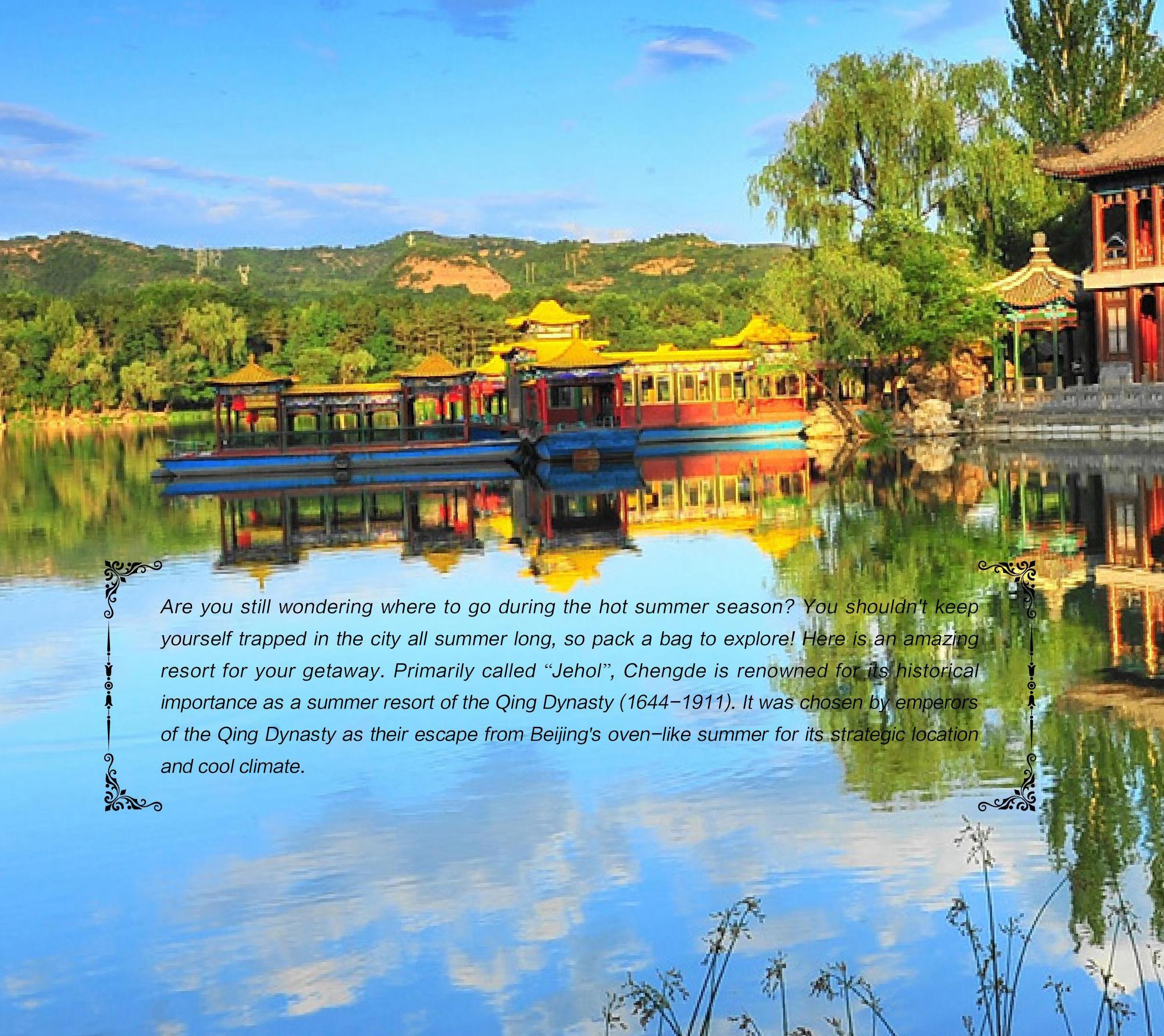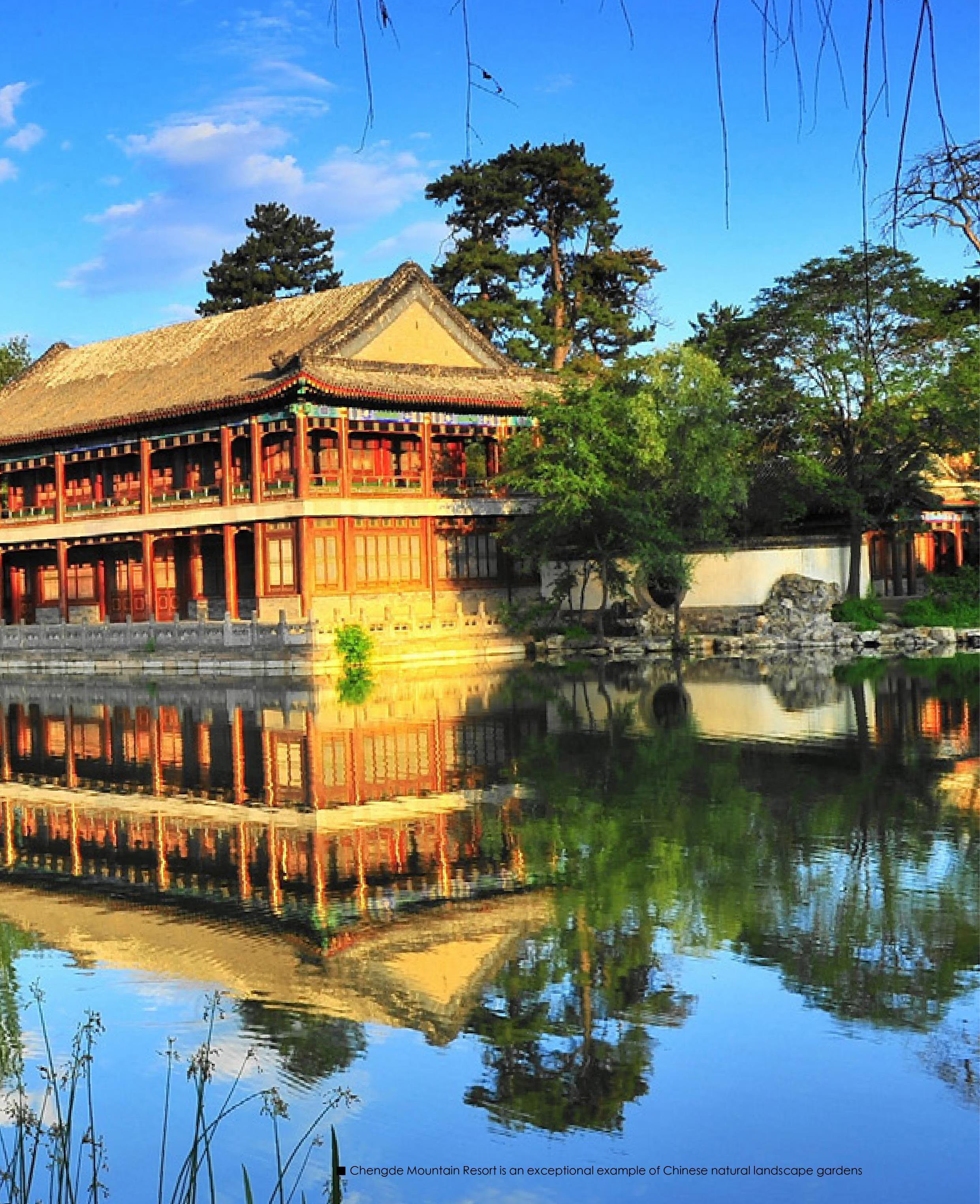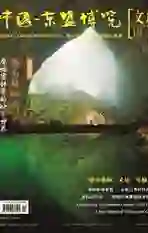A Vast Imperial Palace and Garden
2019-11-17MoTingting
Mo Tingting



Are you still wondering where to go during the hot summer season? You shouldn't keep yourself trapped in the city all summer long, so pack a bag to explore! Here is an amazing resort for your getaway. Primarily called “Jehol”, Chengde is renowned for its historical importance as a summer resort of the Qing Dynasty (1644-1911). It was chosen by emperors of the Qing Dynasty as their escape from Beijing's oven-like summer for its strategic location and cool climate.
A historic temple complex
Chengde lies in the northeast of Hebei Province. The renowned Chengde Mountain Resort is twice the size of Beijings Summer Palace, boasting breathtaking terrain, a vast imperial summer resort and a plethora of picturesque temples. It is included in the “Four Chinese Gardens” together with Summer Palace, Humble Administrator's Garden and Lingering Garden.
Since it is only 250 kilometers from Beijing, generations of Qing emperors dealt with government affairs and received foreign envoys and tribal leaders here in summer and autumn each year. They also went north to hold the Mulan Autumn Hunting. Hence, the resort became the national political center only second to Beijing at that time.
It is said that once Emperor Kangxi (1654-1722) led a group of officials and generals hunting. In pursuit of a mysterious white rabbit, the emperor discovered a hot spring, beyond which was a vast grassland backed by tree-shrouded mountains. He immediately decided to build a palace there. As soon as he had announced his intention, the white rabbit appeared before him again. The emperor realized that the rabbit had been divinely sent to guide him to the spot.
There are temples of many architectural styles and imperial gardens which are effortlessly blended into a landscape of lakes, pastureland and forests, showing a style of delicacy and primitive simplicity. The 12 outlying imperial temples are distributed across the eastern and northern hills outside the palace and garden area, fostering relations with the ethnic minorities and helping to safeguard the Mountain Resort. Through the integration of elements of Mongolian, Tibetan and Hans architectural art and culture, the outlying temples crystallize the achievements of cultural exchanges and integration among different ethnic groups in the history of Chinese architecture. Originally there were 12 temples, but now there are only seven temples and one relic left, which are collectively called the Eight Outlying Temples. Eight Outlying Temples are eight Tibetan Buddhist Monasteries, including the Boren Temple, Puning Temple, Anyuan Temple, Putuozongcheng Temple, Guangan Temple, Shuxiang Temple, Guangyuan Temple and Xumifushou Temple (the temple for praying happiness and longevity). Its architecture, gardens and a large number of inscriptions, sculptures, murals, statues and other artifacts play an important role in the study of history, culture, religion art, and garden culture of the Qing Dynasty as art treasures.
There are temples of many architectural styles and imperial gardens which are effortlessly blended into a landscape of lakes, pastureland and forests, showing a style of delicacy and primitive simplicity.
A garden in the classic style
The design of the landscape of Chengde Mountain Resort has followed the topography of natural hills and water. As an exceptional example of Chinese natural landscape gardens and palaces, it inherits and carries forward China's imperial gardening tradition.
The Mountain Resort is divided into four parts: palace area, lake area, plain area and mountain area. Going south, you will come to the palace area where the Qing emperors dealt with political affairs and the royal families lived. It consists of four main complexes: Main Palace, Pine-Crane Hall, East Palace and Pine Soughing Valley. The Main Palace was the place where important ceremonies and events were observed, but today it is used as the Mountain Resort Museum. The Pine-Crane Hall was the residence built by Emperor Qianlong (1711-1799) for his mother while the East Palace was damaged in a fire in 1945 with only the groundwork still visible today. The Pine Soughing Valley was the reading room of the emperors and the office where the emperors handled the political mandates. Those buildings, covered with glazed tiles, were made of green bricks. They are hidden in the woods of tall pine trees and create a circumstance of tranquility.
The lake area, lying in the north, is the place where the emperors and queens used to enjoy themselves. Eight islets divide the lake area into several fields of different sizes, sparkling like some diamonds. Emperor Kangxi once wrote a poem, saying that the scenic views here could surpass that in the West Lake. And Emperor Qianlong once said, “though it is called the Mountain Resort, its beauty is in the water”. The architecture around mainly imitates the famous scenic views of the south of the Yangtze River, full of changes. Weeping willows crooning along the banks and green waves poppling on the lake make up a wonderful picture.
The plain area is located at the foot of the mountain, north of the lake area. The plain is a vast area, and is covered with thick grass and trees. When the Summer Resort was initially constructed, there were flocks of elks.
The mountain area, located in the northwest of the resort, is formed by four valleys: Filbert Valley, Pine Valley, Pear Valley and Pine-cloud Valley. Here you can enjoy the mountain scenery completely, including undulating hills, flourishing woods, steep peaks, gurgling streams and white waterfalls. It is pleasantly cool here, the best place to spend the summer holidays.
Emperor Kangxi once wrote a poem, saying that the scenic views here could surpass that in the West Lake. And Emperor Qianlong once said, “though it is called the Mountain Resort, its beauty is in the water”.
A paddock for royal hunting
Located in Weichang Manchu and Mongolian Autonomous County of Chengde, Mulan Paddock is regarded as Beijings backyard garden. It used to be a royal hunting place and a summer retreat in the Qing Dynasty. The Emperor Kangxi, Qianlong and Jiaqing (1760-1820) had ever held hunting activities here in autumn, which gradually became a rule for the imperial family. By holding military maneuvers, emperors aimed at enhancing the military quality of the imperial kinsmen and the Eight Banners as well as carrying out the conciliation policy to ethnic minorities.
It consists of mainly three sections: Saihanba National Forest Park, Yudaokou Grassland and Forest Scenic Zone, and Hongsongwa National Nature Reserve. Mulan Paddock enjoys the really gorgeous scenery. With vast forest and a wide expanse of grassland, it owns herds of cows and flocks of sheep. During summer days, all kinds of flowers are in full blossom and birds are giggling in the sky, while in winter, the snow-covered ground can give you a much fresh experience and everywhere is a white world. Due to the cool weather and picturesque scenery in summer, tourists can come here to escape the heat, while it becomes an ideal place for skiing and hunting with rare animals and birds in the forest during the winter days.
The Saihanba National Forest Park is a must-see spot in Chengde no matter when you are here. When you arrive at the entrance of the Saihanba National Forest Park, you will be captivated by the clear sky. Differently colored flowers are sprinkled across the huge surrounding grasslands, like a real-life painting by nature's hand. The trees are so tall and the environment well-preserved. You could hardly imagine that such beautiful grassland was once as barren as a desert. The Saihanba National Forest Park was once part of the Qing Dynasty Mulan hunting grounds. After the Qing emperors fell from power, the hunting ground finally opened to the public.
